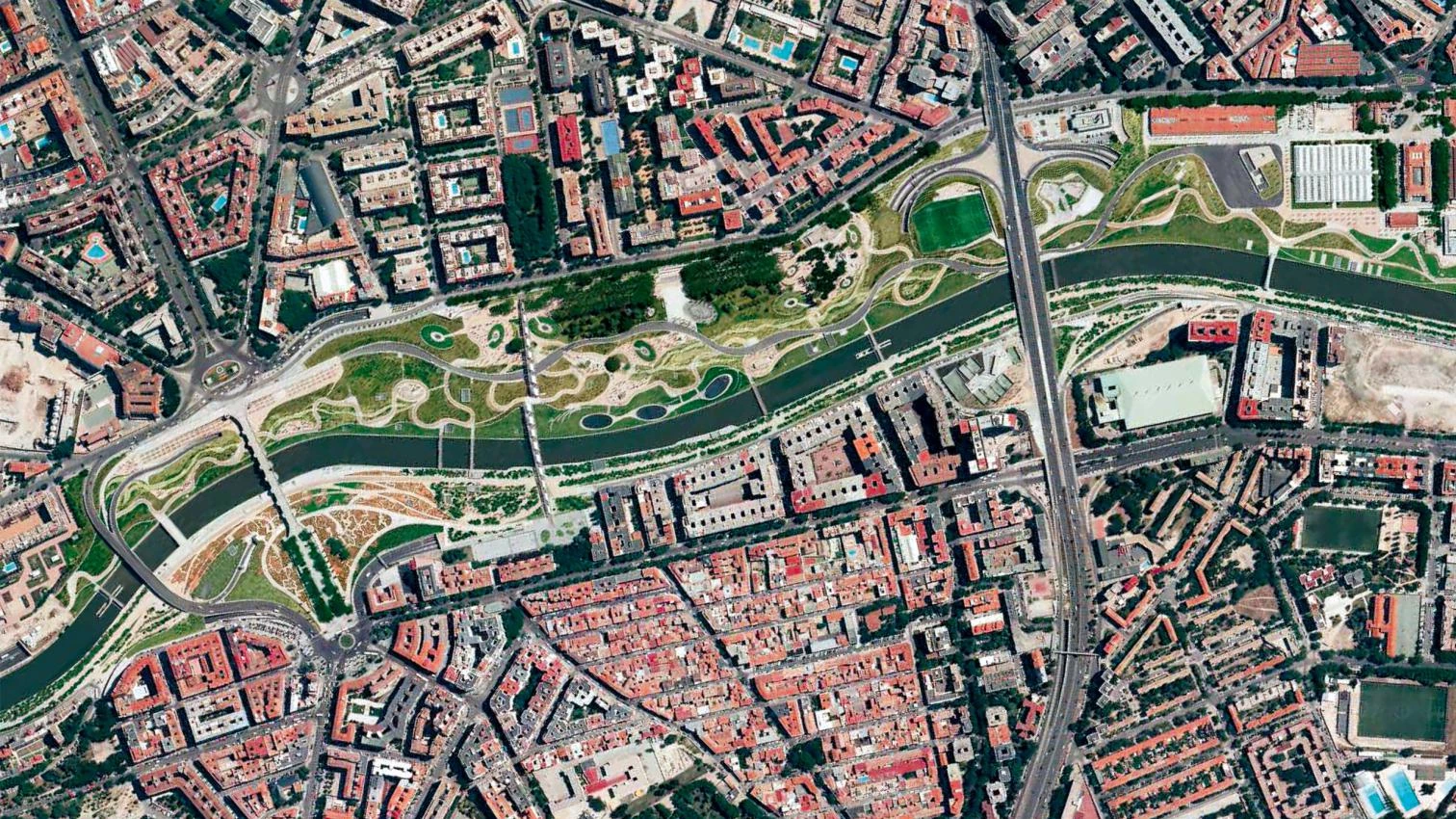
Madrid Río, the Spanish capital’s main urban project, is still a character in search of an author. Francisco Burgos, Ginés Garrido, and Fernando Porras-Isla have edited a fine book, which – full disclosure – I accepted the invitation to preface; but the extensive presentation of data and diagrams cannot replace the story behind this colossal urban renewal, and that remains to be written. Their exemplary transformation of the Manzanares riverbank (designed with the Madrid office of Carlos Rubio and Enrique Álvarez- Sala, and with the Dutch landscapists West 8, led by Adriaan Geuze) is documented with graphically elegant plans and sketches, photographs and texts; but in the volume two of the project’s main actors are conspicuous by their absence: the mayor Alberto Ruiz-Gallardón, a politician who dared to back a visionary urban project that merged infrastructure and landscaping, civic suture, and social rebalance; and the engineer Manuel Melis, chair professor at the School of Civil Engineering, who carried out the vast subway extension while Gallardón was president of the region, and this time put his expertise in tunnels and his organizational skills at the service of an endeavor of massive dimensions and extreme complexity, because the M-30 ringroad had to be kept in service the whole time. Their names can only be found in the newspaper cutouts printed in the book, because the texts fail to mention them, and this seems as implausible as ignoring an elephant in a room.
Ten years ago Madrid’s City Council asked me for help in organizing the competition of what they called ‘Linear Park of the Manzanares River’ – per my suggestion the name changed to Madrid Río, just like way back, but with a socialist council, I had talked Eduardo Mangada into switching the name of the urban plan baptized ‘Vallecas 92’ to ‘Madrid Sur’ –, and it was decided early on that the competition would be called in two phases: one open (where the projects of Ezquiaga and of the final winners were shortlisted), and one by invitation. The latter phase included Navarro Baldeweg, Lapeña & Torres, Perrault, Herzog & de Meuron, Sejima & Nishizawa, and Eisenman with James Corner. The architects presented their proposals before the jury – formed by political representatives and by five experts, engineer Julio Martínez Calzón, urbanist Peter Rowe, historian Kurt Forster, critic Vittorio Magnago Lampugnani, and myself – presided by Gallardón who, unlike so many other politicians that delegate urban decisions, was present at all times. The verdict, aside from choosing the team headed by Garrido, gave accesits and the possibility of designing singular elements to Herzog & de Meuron, Navarro Baldeweg, and Perrault, whose sculptural bridge over the Manzanares River originates in this mention.
Taking the project to completion was bound to demand a huge effort from the architects, and tensions with those responsible for the civil engineering, led by the expeditious Melis; but without him and without Gallardón Madrid Río would not have been possible, and any future story should pay tribute, along with the architects, to the engineer and the politician who headed the challenge, and to the citizens who endured two years of chaotic traffic, and will endure for many more the debt that made the work possible.






